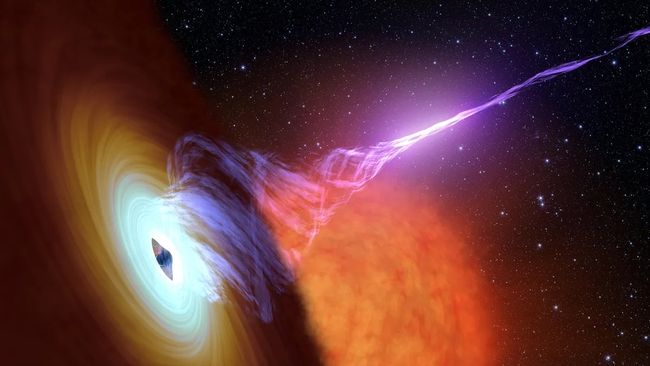James Webb Telescope Reveals Monster Black Hole Starving Its Host Galaxy to Death
New observations with JWST have confirmed that supermassive black holes have the power to quench star formation across their surrounding galaxies.
Scientists with the help of JWST identified a supermassive black hole which is starving its host galaxy to death.
This black hole is 200 billion times the sun’s mass, and it’s found 12 billion light years away in the middle of the galaxy GS-10578, or ‘Pablo’ galaxy. Prior studies showed that the galaxy has ceased star formation but earlier telescopes failed to identify why.
Now, the JWST has informed astronomers that the black hole is expelling gas out of the galaxy before it may turn it into stars. The studies were released on the Nature Astronomy on September 16.
‘We found the culprit’ remarked Francesco D’Eugenio, the co-lead author who is an astrophysics at the University of Cambridge. This black hole is starving this galaxy by starving it off the gas required to produce stars.
Supermassive black holes are normally found at galactic nuclei, feeding on matter and blowing it out at almost the velocity of light thus controlling the developmental fate of galaxies. However, it has remained rather ambiguous as to the influence exerted by these twos cosmic giants on their respective galaxies.
“Previous studies indicated that this galaxy is forming very few stars for its mass and this we believed was related to the black hole,” D’Eugenio said. “But until JWST, we were unable to establish such a connection or find out whether it was a transient or a final option. ”
For more details of the study, the research team employed JWST in the observation of the galaxy. Along with the hot gas outflows, they discovered a cooler reservoir of neutral gas that is dense and extends an otherwise invisible ‘cone of darkness’ across the face of a distant galaxy whose light is obscured. The mass of this expelled gas was much larger than that required to form new stars thus supporting theories which suggest that black holes can actually inhibit star formation in their host galaxies.
It affirms some models on black holes which assumed that the event can ‘extinguish’ star development, while negating the others that presumed the same to trigger a violent shift of galaxies.
While black holes were known to impact their galaxies, until Webb, scientists couldn’t directly prove they halt star formation, adds Maiolino. Webbs is a breakthrough of studying the early universe and its evolution.
Now that the black hole has been pinpointed as the galaxy-extinguisher, the scientists say they intend to utilize the Atacama Large Millimeter/submillimeter Array in Ch to conduct follow-up observations in an effort to capture any other regions of star-forming gas that may remain and also to learn more about the black hole’s effects on the area.
Do not forget to share your opinion with us to provide you with the best posts !




0 Comments